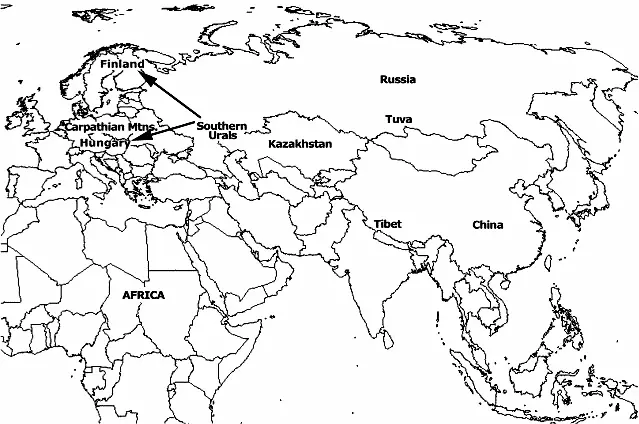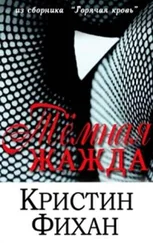I think it would be a good thing to go there, Ferro, Elisabeta said. I would love to see the Carpathian Mountains again, and perhaps even the monastery, but that is where the Malinov piece for the council is hidden. Cornel is aware of it, although he does not know exactly where it is located. He will try to recover it. I am uncertain exactly where it is, either, only that it is not here in the United States .
When did you remember this bit of information? Ferro tried to keep the challenge out of his voice. Knowing where the Malinov membership piece was was huge. She should have told him immediately.
Just now. When Traian talked about going home. I caught a flicker of it in Ruslan’s mind. I could not catch the exact place, but if I am there, it is possible I would be able to find it .
“I would very much like to show Elisabeta the place she was born,” Traian said. “It would be a fair exchange to lend you Josef for a short while and then you bring him back to us. I can get word to Mikhail and ask him if this is permissible.”
“I think that would be more than fair,” Ferro agreed, resting his chin on the top of Elisabeta’s head. “It will also give me a chance to meet the prince. Perhaps some of the brethren will travel with me as well so they can meet him, too.” He could make up his mind about swearing his allegiance. It seemed that many ancients believed in the prince.
The Dark Troubadours began to play another song, this one slow and haunting, a love song, and Elisabeta turned her head up quickly to look at Ferro.
That is our song. Yours and mine .
He smiled at her. “Yes, it is our song. I gave them the music and lyrics. Come dance with me.” He took her hand. “If you’ll excuse us, I would very much like to dance with my lifemate.”
Ferro took Elisabeta into his arms. Her soft, feminine body molded to his. Fit perfectly. Joy was present. Alive in him. Love surrounded him. Lived in him. All because of her . . . Elisabeta.
APPENDIX 1
Carpathian Healing Chants
To rightly understand Carpathian healing chants, background is required in several areas:
1. The Carpathian view on healing
2. The Lesser Healing Chant of the Carpathians
3. The Great Healing Chant of the Carpathians
4. Carpathian musical aesthetics
5. Lullaby
6. Song to Heal the Earth
7. Carpathian chanting technique
1. THE CARPATHIAN VIEW ON HEALING
The Carpathians are a nomadic people whose geographic origins can be traced at least as far as the Southern Ural Mountains (near the steppes of modern-day Kazakhstan), on the border between Europe and Asia. (For this reason, modern?day linguists call their language “proto-Uralic,” without knowing that this is the language of the Carpathians.) Unlike most nomadic peoples, the Carpathians did not wander due to the need to find new grazing lands as the seasons and climate shifted, or to search for better trade. Instead, the Carpathians’ movements were driven by a great purpose: to find a land that would have the right earth, a soil with the kind of richness that would greatly enhance their rejuvenative powers.
Over the centuries, they migrated westward (some six thousand years ago), until they at last found their perfect homeland—their susu —in the Carpathian Mountains, whose long arc cradled the lush plains of the kingdom of Hungary. (The kingdom of Hungary flourished for over a millennium—making Hungarian the dominant language of the Carpathian Basin—until the kingdom’s lands were split among several countries after World War I: Austria, Czechoslovakia, Romania, Yugoslavia and modern Hungary.)
Other peoples from the Southern Urals (who shared the Carpathian language but were not Carpathians) migrated in different directions. Some ended up in Finland, which explains why the modern Hungarian and Finnish languages are among the contemporary descendants of the ancient Carpathian language. Even though they are tied forever to their chosen Carpathian homeland, the Carpathians continue to wander as they search the world for the answers that will enable them to bear and raise their offspring without difficulty.

Because of their geographic origins, the Carpathian views on healing share much with the larger Eurasian shamanistic tradition. Probably the closest modern representative of that tradition is based in Tuva (and is referred to as “Tuvinian Shamanism”)—see the map on the previous page.
The Eurasian shamanistic tradition—from the Carpathians to the Siberian shamans—held that illness originated in the human soul, and only later manifested as various physical conditions. Therefore, shamanistic healing, while not neglecting the body, focused on the soul and its healing. The most profound illnesses were understood to be caused by “soul departure,” where all or some part of the sick person’s soul has wandered away from the body (into the nether realms) or has been captured or possessed by an evil spirit, or both.
The Carpathians belong to this greater Eurasian shamanistic tradition and share its viewpoints. While the Carpathians themselves did not succumb to illness, Carpathian healers understood that the most profound wounds were also accompanied by a similar “soul departure.”
Upon reaching the diagnosis of “soul departure,” the healer-shaman is then required to make a spiritual journey into the netherworld to recover the soul. The shaman may have to overcome tremendous challenges along the way, particularly fighting the demon or vampire who has possessed his friend’s soul.
“Soul departure” doesn’t require a person to be unconscious (although that certainly can be the case as well). It was understood that a person could still appear to be conscious, even talk and interact with others, and yet be missing a part of their soul. The experienced healer or shaman would instantly see the problem nonetheless, in subtle signs that others might miss: the person’s attention wandering every now and then, a lessening in their enthusiasm about life, chronic depression, a diminishment in the brightness of their “aura” and the like.
2. THE LESSER HEALING CHANT OF THE CARPATHIANS
Kepä Sarna Pus (The Lesser Healing Chant)is used for wounds that are merely physical in nature. The Carpathian healer leaves his body and enters the wounded Carpathian’s body to heal great mortal wounds from the inside out using pure energy. He proclaims, “I offer freely my life for your life,” as he gives his blood to the injured Carpathian. Because the Carpathians are of the earth and bound to the soil, they are healed by the soil of their homeland. Their saliva is also often used for its rejuvenative powers.
It is also very common for the Carpathian chants (both the Lesser and the Great) to be accompanied by the use of healing herbs, aromas from Carpathian candles and crystals. The crystals (when combined with the Carpathians’ empathic, psychic connection to the entire universe) are used to gather positive energy from their surroundings, which is then used to accelerate the healing. Caves are sometimes used as the setting for the healing.
The Lesser Healing Chant was used by Vikirnoff Von Shrieder and Colby Jansen to heal Rafael De La Cruz, whose heart had been ripped out by a vampire, as described in Dark Secret .
Kepä Sarna Pus (The Lesser Healing Chant)
The same chant is used for all physical wounds. “Sívadaba” (into your heart) would be changed to refer to whatever part of the body is wounded.
Читать дальше







![Кристин Фихан - Тёмная легенда [любительский перевод]](/books/227189/kristin-fihan-temnaya-legenda-lyubitelskij-perevod-thumb.webp)




